The evolving landscape of Financial Planning and Analysis (FP&A) demands a synergy of human expertise and Artificial Intelligence (AI). The recent FP&A Trends webinar, “Empowered Decision-Making: Human-Led, AI-Backed Intelligence in FP&A”, shed light on how organisations can develop this synergy and benefit from it. Speakers from Dell, Novartis and Prophix shared their insights on the subject, highlighting actionable strategies, challenges and real-world applications of AI in FP&A.
Artificial Intelligence Trends and Their Impact on FP&A
The transformative potential of AI and Machine Learning (ML) in FP&A is immense. A notable statistic coming from the 2023 FP&A Trends Survey revealed that organisations that utilise AI/ML spend 39% of their time on high-value activities, compared to 34% for non-adopters. This percentage did not change in the 2024 version of the FP&A Trends Survey. Despite its potential, the adoption of AI/ML has seen a decline from 11% in 2021 to 7% and 6% in 2023-2024, emphasising the need for renewed focus and strategic implementation.
Driving Efficiency: The Dell Case Study
Saurabh Jha, Director of Data Science at Dell Technologies, showcased how AI can streamline operational processes through an insightful company’s case study. He shared how Dell leverages AI to automate commentary generation and provide actionable insights that combine narratives with visualised data for improved understanding. By adopting these innovations, Dell reduced labour-intensive tasks, enabling teams to focus on strategic goals and leverage AI as a key enabler for growth.
One standout innovation, the "Data Copilot", integrates natural language interfaces and large language models (LLMs), enabling real-time insights across siloed data domains. This transformative approach redefines Business Intelligence (BI) experiences and fosters human-machine collaboration. Key initiatives driving these results included:
- Automated Insights: Using natural language generation to transform Business Intelligence.
- Generative AI Q&A Systems: Streamlining data workflows and enhancing decision-making with real-time insights.
- Business Growth and Personalisation: Modernising forecasting processes while fostering innovation.
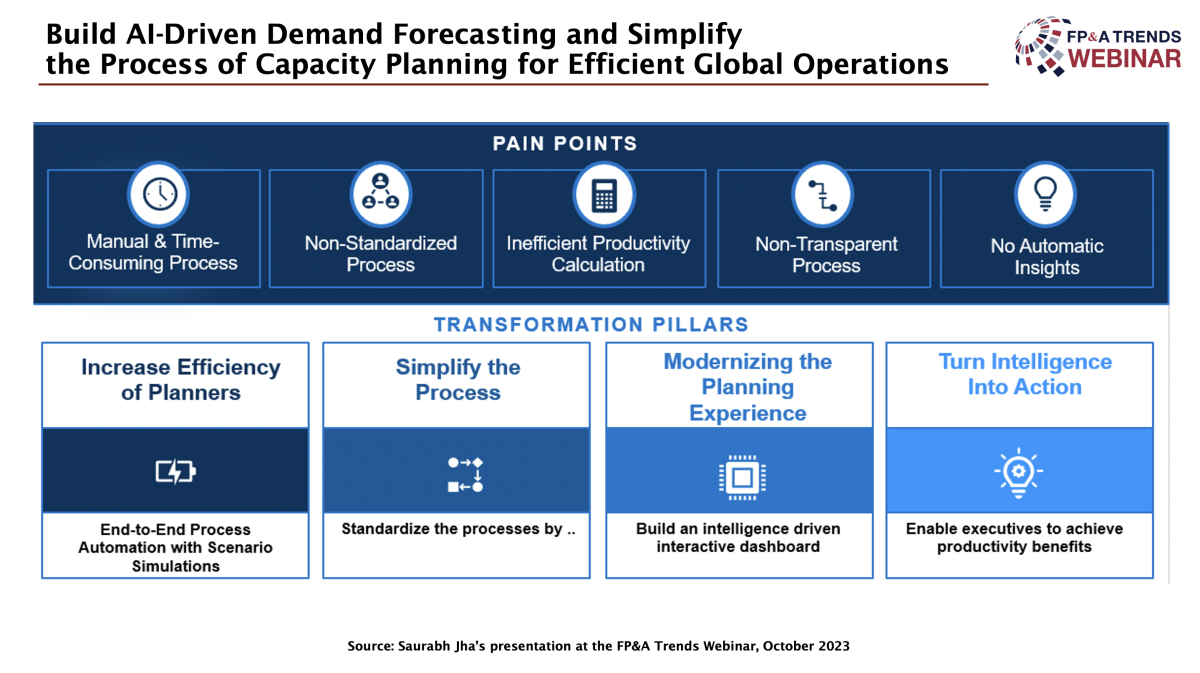
Figure 1
The figure above highlights a framework for AI-driven demand forecasting and capacity planning for efficient global operations. By addressing critical pain points, Dell's approach enables planners to shift their focus towards strategic priorities, unlocking new opportunities for growth and operational excellence.
Do Organisations Leverage AI/ML in their FP&A?
Insights from a live polling question revealed how the audience leverages AI/ML within their companies. Only 1% of the webinar attendees claimed to use AI/ML in finance and FP&A, whereas 53% said they do not. 33% of the respondents plan to use it in the near future, while 12% reported using some AI/ML in their processes.
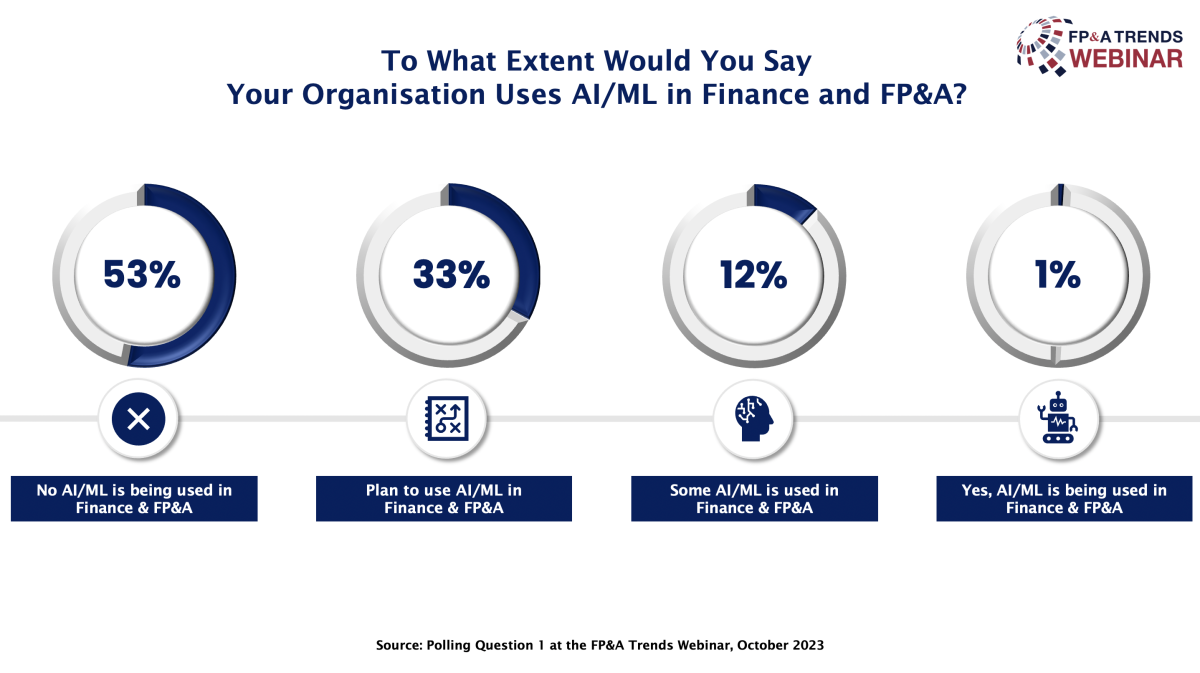
Figure 2
These results reflect a significant gap between the potential and actual adoption of AI/ML in FP&A.
Holistic Change Management for AI Integration
Maryam Pazouki, Associate Director BPA at Novartis Institutes for BioMedical Research, stressed that successful AI adoption requires a holistic approach. She emphasised that fostering collaboration, building trust and enhancing understanding are critical to overcoming resistance and ensuring seamless integration. Key strategies she outlined included the following:
- Collaborative Approaches: Involving different teams early in the AI implementation process.
- Transparent Validation: Building trust through clear, understandable results.
- Education and Communication: Equipping teams with the knowledge to understand and appreciate the value of AI and reduce concerns about job displacement.
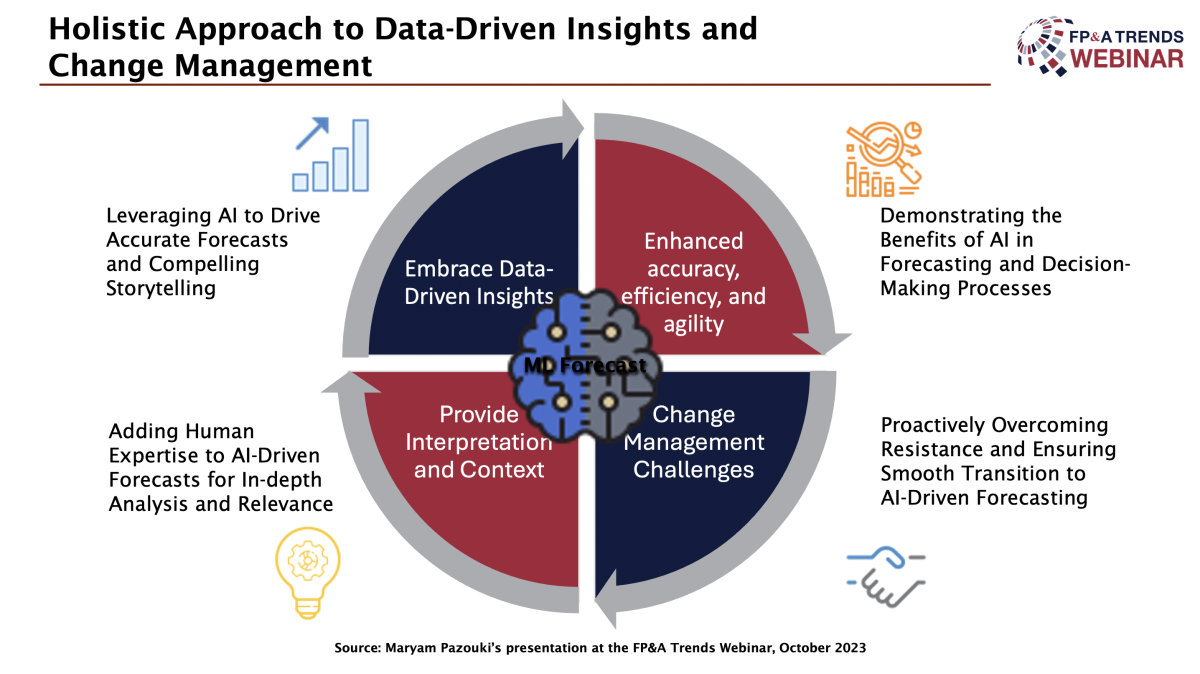
Figure 3
This figure illustrates a holistic framework that integrates AI-driven forecasting with human expertise for enhanced insights and context. By addressing challenges such as resistance to change, the approach ensures a smoother transition and paves the way for more agile and effective decision-making processes.
What to Factor in Before Advancing Your Digital Journey towards AI/ML?
The second polling question revealed the audience’s input on the key factors to further advance the digital journey towards AI/ML. For 32% of the respondents, it is leadership support. However, skills and competencies in finance are important for 27% of the audience, while data and processes received 24% of the votes. Surprisingly, technology has become the least important factor in advancing AI/ML, as only 17% of people voted for it.
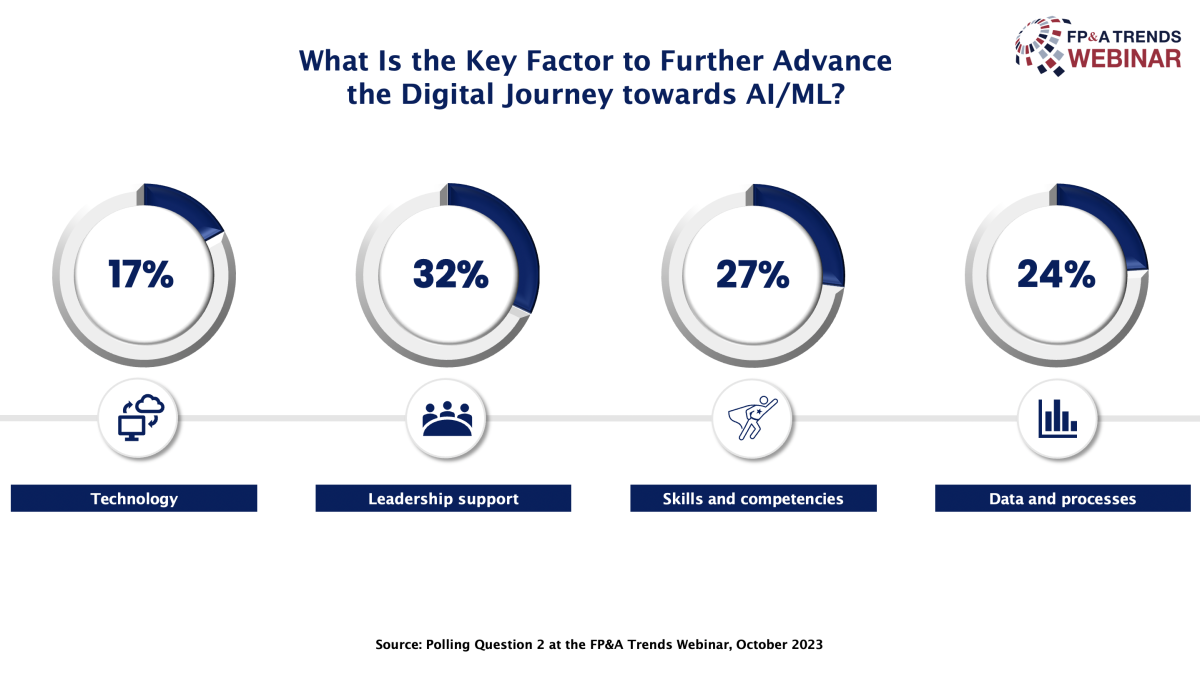
Figure 4
Poll results underline that advancing AI in FP&A requires prioritising leadership and skill-building over technological investments.
AI’s Role in Elevating FP&A
Chris Porter, Director of Product Marketing at Prophix, demonstrated how AI enables FP&A professionals to shift from routine tasks to strategic decision-making. He highlighted practical use cases that demonstrate the value of AI in enhancing efficiency and insights:
- Anomaly Detection: Identifying discrepancies in financial transactions to address risks.
- Narrative Generation: Providing contextual insights alongside data visualisations to support informed decision-making.
- Variance Analysis: Automating explanations for budget deviations to streamline reporting.
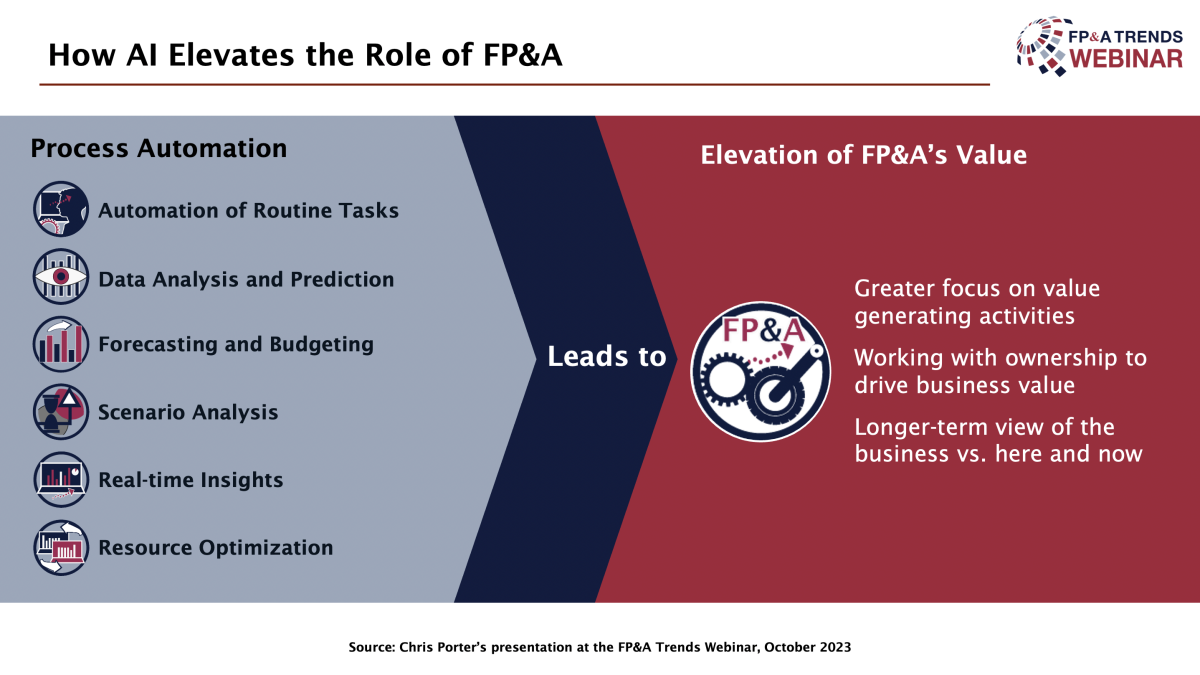
Figure 5
This figure highlights how AI empowers FP&A teams to deliver real-time insights, optimise resource allocation and drive smarter, faster decision-making processes. By integrating automation and advanced analytics, AI elevates the role of FP&A to focus on value-driven activities that shape long-term business success.
Conclusion: Balancing Human Expertise with AI Innovation
The consensus among the speakers was clear: AI is a tool that enhances human capabilities, not a replacement for us and our expertise. Its role in FP&A is to empower decision-makers and enable them to focus on value-generating activities and strategic planning. However, organisations must prioritise transparent processes, robust education programs, and collaborative change management to maximise AI’s benefits.
This webinar was proudly sponsored by Prophix.
To watch the full webinar recording, follow this link.
Subscribe to
FP&A Trends Digest

We will regularly update you on the latest trends and developments in FP&A. Take the opportunity to have articles written by finance thought leaders delivered directly to your inbox; watch compelling webinars; connect with like-minded professionals; and become a part of our global community.
